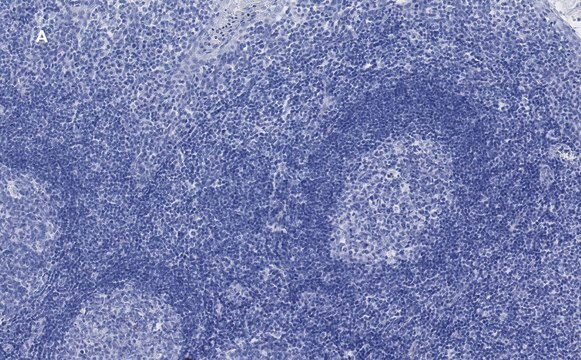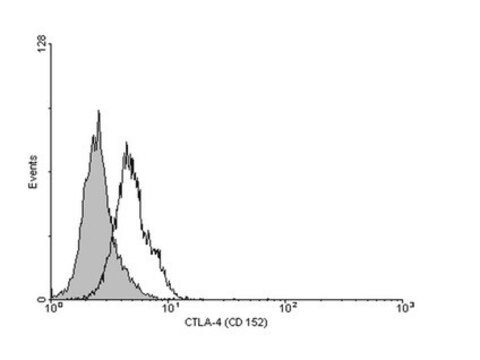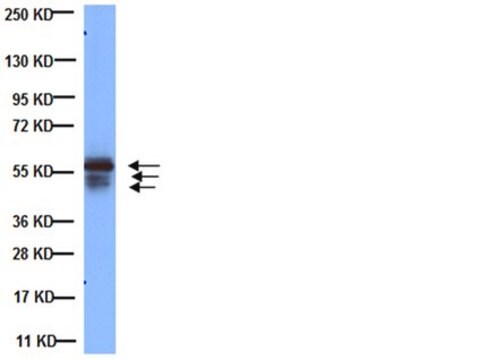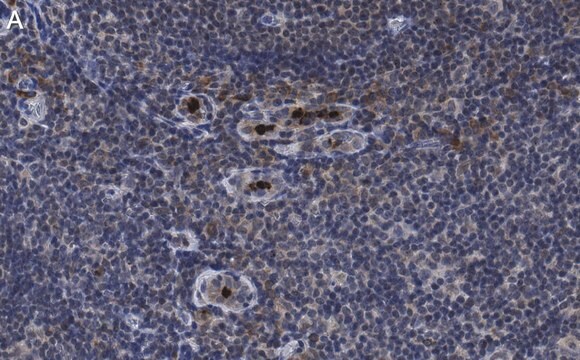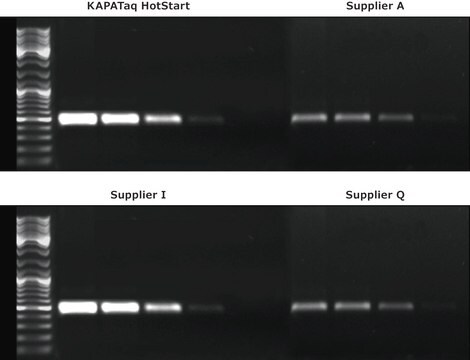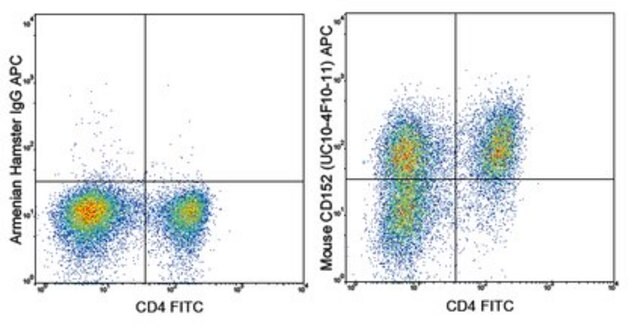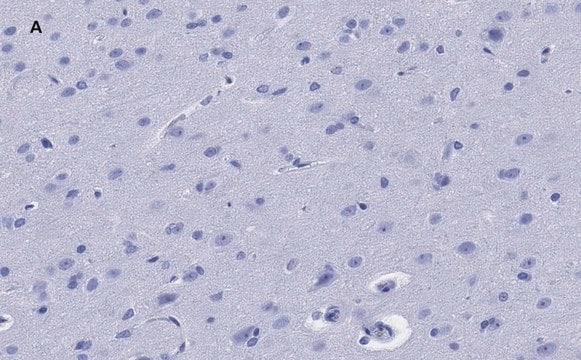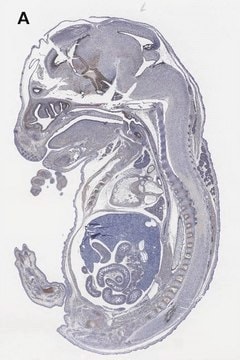ZRB1783
Anti-CTLA4/CD152 Antibody, clone 1D10 ZooMAb® Rabbit Monoclonal

recombinant, expressed in HEK 293 cells
Sinónimos:
Cytotoxic T-lymphocyte protein 4;Cytotoxic T-lymphocyte-associated antigen 4
About This Item
Productos recomendados
biological source
rabbit
Quality Level
recombinant
expressed in HEK 293 cells
conjugate
unconjugated
antibody form
purified antibody
antibody product type
primary antibodies
clone
1D10, recombinant monoclonal
description
1D10 Clone
product line
ZooMAb® learn more
form
lyophilized
mol wt
calculated mol wt 24.66 kDa
observed mol wt ~20 kDa
purified by
using Protein A
species reactivity
human
species reactivity (predicted by homology)
monkey
packaging
antibody small pack of 25 μL
greener alternative product characteristics
Waste Prevention
Designing Safer Chemicals
Design for Energy Efficiency
Learn more about the Principles of Green Chemistry.
enhanced validation
recombinant expression
Learn more about Antibody Enhanced Validation
sustainability
Greener Alternative Product
technique(s)
affinity binding assay: suitable
flow cytometry: suitable
immunocytochemistry: suitable
immunohistochemistry (formalin-fixed, paraffin-embedded sections): suitable
western blot: suitable
isotype
IgG
epitope sequence
N-terminal extracellular domain
Protein ID accession no.
UniProt accession no.
greener alternative category
shipped in
ambient
storage temp.
2-8°C
target post-translational modification
unmodified
Gene Information
human ... CTLA4(1493)
General description
Specificity
Immunogen
Application
Evaluated by Western Blotting in lysate from PHA treated peripheral blood mononuclear cells (PBMC) treated with PHA.
Western Blotting Analysis (WB): A 1:1,000 dilution of this antibody detected CTLA4/CD152 in lysates from peripheral blood mononuclear cells (PBMC) treated with Phytohaemagglutinin (PHA; 10 g/mL; 2 days).
Tested Applications
Western Blotting Analysis: A 1:1,000 dilution from a representative lot detected CTLA4/CD152 in Raji and MOLT-4 cell lysates.
Immunocytochemistry Analysis: A 1:1,000 dilution from a representative lot detected CTLA4/CD152 in Jurkat cells.
Immunohistochemistry (Paraffin) Analysis: A 1:1,000 dilution from a representative lot detected CTLA4/CD152 in human appendix tissue sections.
Affinity Binding Assay: A representative lot of this antibody bound CTLA4/CD152 peptide with a KD of 4.3 x 10-8 in an affinity binding assay.
Flow Cytometry Analysis: 1 μg from a representative lot detected CTLA4/CD152 in one million Jurkat cells.
Note: Actual optimal working dilutions must be determined by end user as specimens, and experimental conditions may vary with the end user
Target description
Physical form
Reconstitution
Storage and Stability
Legal Information
Disclaimer
¿No encuentra el producto adecuado?
Pruebe nuestro Herramienta de selección de productos.
Storage Class
11 - Combustible Solids
wgk_germany
WGK 1
flash_point_f
Not applicable
flash_point_c
Not applicable
Elija entre una de las versiones más recientes:
Certificados de análisis (COA)
Lo sentimos, en este momento no disponemos de COAs para este producto en línea.
Si necesita más asistencia, póngase en contacto con Atención al cliente
¿Ya tiene este producto?
Encuentre la documentación para los productos que ha comprado recientemente en la Biblioteca de documentos.
Nuestro equipo de científicos tiene experiencia en todas las áreas de investigación: Ciencias de la vida, Ciencia de los materiales, Síntesis química, Cromatografía, Analítica y muchas otras.
Póngase en contacto con el Servicio técnico